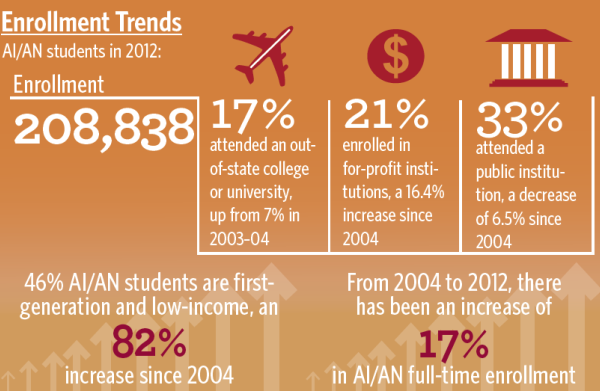
Mastering the Art of Teaching
As ACE and the Association of College and University Educators’ launch a national effort to advance effective higher education instruction, Deborah Seymour writes on the importance of quality teaching at the college level.
March 9, 2016
Hanover Park’s Education and Work Center: Embarking on a Path of Hope
President Obama in 2014 signed the Workforce Innovation and Opportunity Act, which helps ensure that job seekers have access to strategically coordinated education, employment, training and support services. However, in a small town in Illinois, one mayor was already spearheading the kind of strategic planning the federal mandate would soon require. ACE Fellow Kenya F. Ayers takes a look.
February 1, 2016
#EducateVeterans on Student Financial Aid
Since the passage of the Post-9/11 GI Bill in 2009, the United States has spent more than $53 billion to educate over 1.4 million military-connected students. However, a large share of veterans and other military-connected students do not receive VA/DoD education benefits or other financial aid to help pay for college. What can be done to ensure they get the support they need and are entitled to?
December 7, 2015
Reimagining Remediation in Tennessee
With implementation of the Tennessee Promise, higher education is looking to Tennessee for lessons learned during its foray into the world of free community college. The Tennessee Board of Regents (TBR) is no less a stranger to scrutiny for its innovative practices in developmental education. Tristan Denley discusses TBR’s pioneering approach to remediation.
October 21, 2015

Supporting First-Generation and Low-Income Students at the University of Florida
First launched in 2006, the Machen Florida Opportunity Scholars Program supports nearly 1,250 undergraduates annually and will soon surpass the 2,000 alumni milestone. For the first-generation and low-income students in the program, early estimates indicate that they are 44 percent more likely to graduate in four years and 47 percent more likely to complete in six years compared to their peers.
September 21, 2015

How to Navigate the Credentialing Maze
The stunning increase in the number and variety of credentials available in this country—college degrees, educational certificates, industry credentials, licensures, and most recently micro-credentials, such as digital badges—seems like a positive thing. However, the complex and fragmented nature of the credentialing marketplace is having the opposite effect—mass confusion.
August 18, 2015

Mapping New Pathways for Native Youth
While 208,838 American Indian and Alaska Native students were enrolled in college in 2012—a 17 percent increase from 2004—46 percent are first-generation and low-income, a population that often struggles with college completion. As the White House gears up for the first Tribal Youth Gathering, Christine Nelson looks at efforts to expand higher education opportunities for these students.
May 26, 2015
From Access to Graduation: Supporting Post-9/11 Undergraduate Student Veterans
Given the huge investment in veterans’ postsecondary education represented by the Post-9/11 GI Bill, one could argue that veterans who use this generous benefit are in a good position to enroll in college and ultimately earn a postsecondary certificate or degree. And some do. But for veterans who didn’t finish college, what were the barriers to their success?
November 10, 2014
General Education, the Four-Year Degree and Employment: What Needs to Change?
Which segment of the four-year degree is supposed to enhance students’ employable skills and prepare them for a job? Most would probably think, the courses in their degree major. But increasingly, employers are saying they can train employees in the specialized technical skills associated with their jobs. It’s the intangible skills that they hope will be taught by colleges and universities.
October 15, 2014
Credit for Prior Learning: Why All the Controversy?
Does the acceptance of prior learning actually lead to less or more revenue for colleges and universities? We don’t know yet, because no one has really researched the impact on institutions’ bottom lines. This research, while not easy, is necessary, writes Deborah Seymour.
June 17, 2014
Three Trends Worth Watching for Continuing Education Leaders
More than 36 million adults between 25 and 64 years of age have completed some college, but don’t have a degree. Further, there are 44.5 million American adults with high school diplomas, but no college experience. Cathy Sandeen identifies a few emerging trends institutions might consider in their quest to serve this massive market of non-traditional students.
May 5, 2014
Confronting Higher Education Consumerism Challenges
The higher education community is well aware of the evolving demographic, economic and technological forces presenting both challenges and opportunities to colleges and universities. But one less-noticed but increasingly powerful driver of higher education change is the concept of consumerism. Cathy Sandeen writes on how the demand for more information is shaping the 21st century college campus.
February 28, 2014